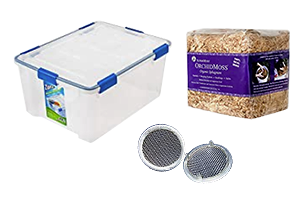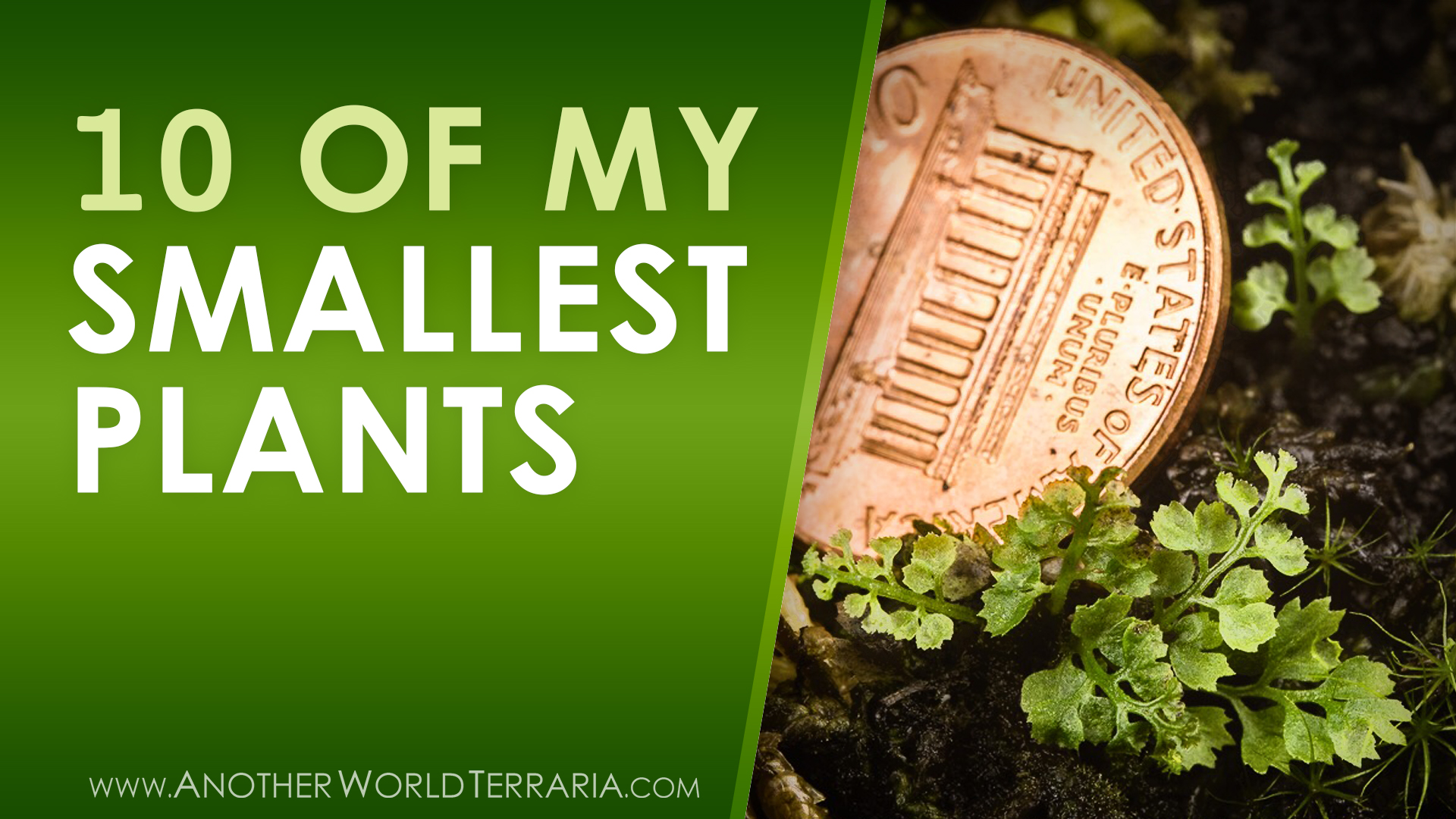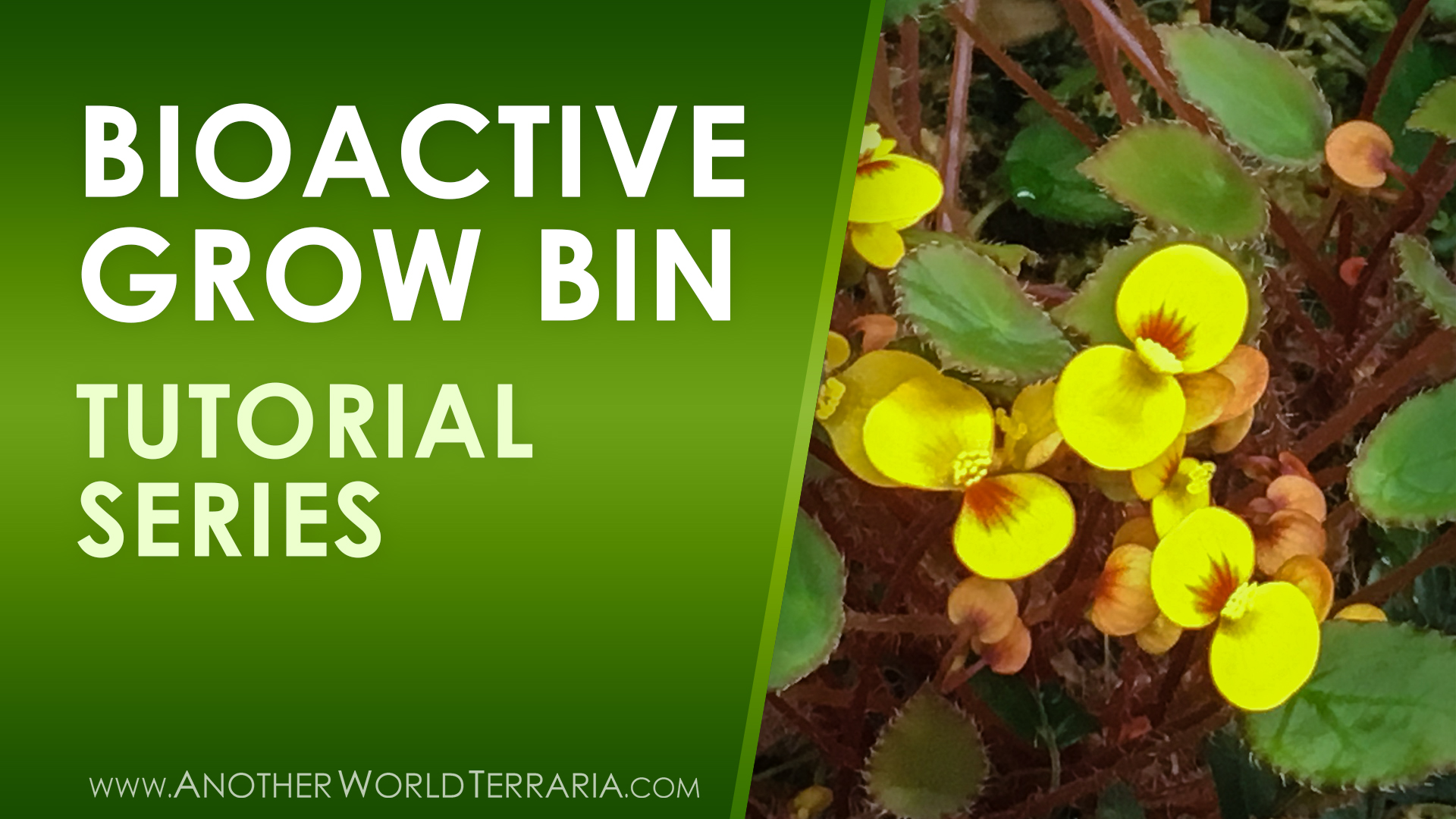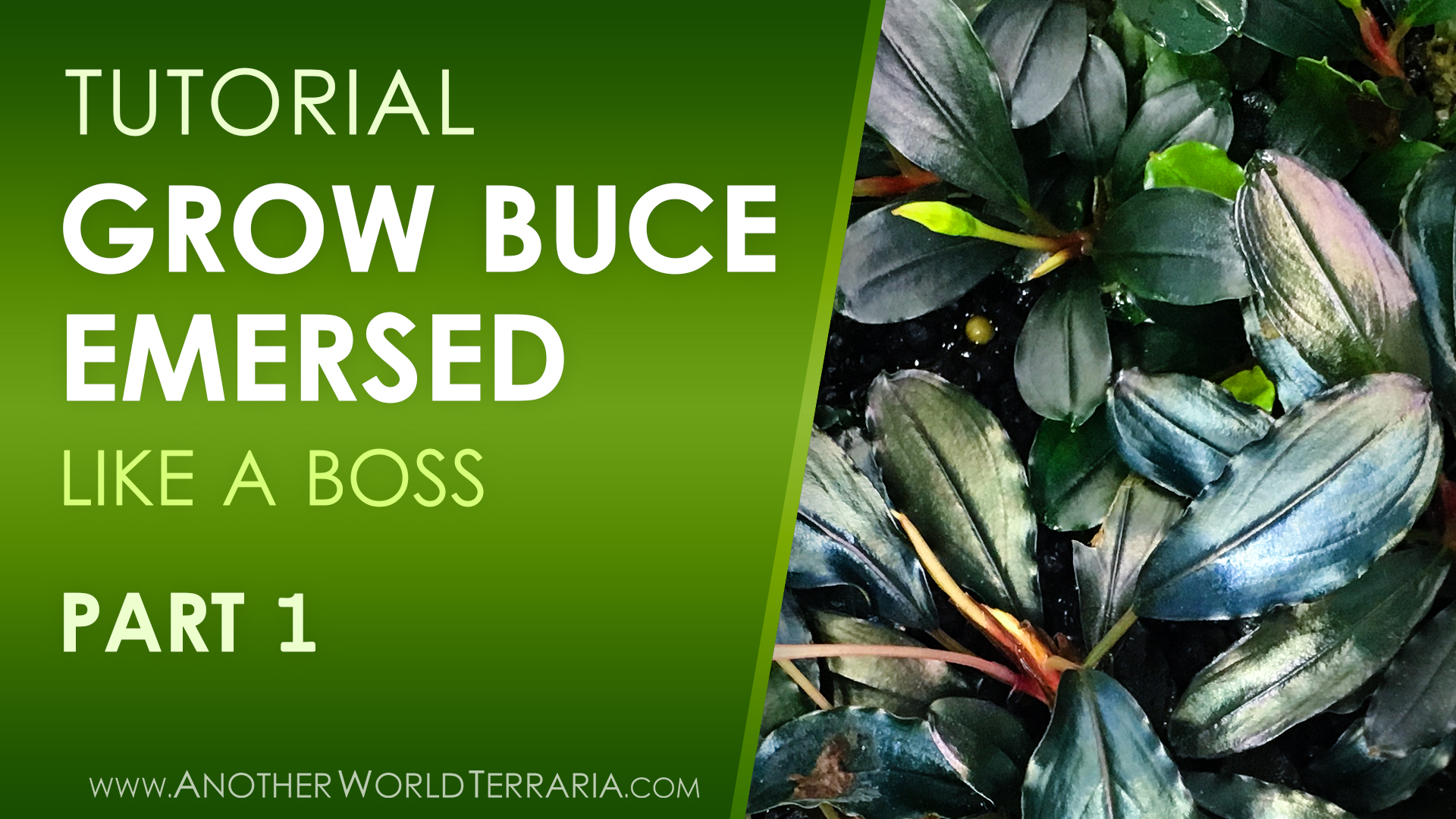Information Covered
Highlight of 10 easy to grow miniature terrarium plants. Lots of info and helpful growing tips. See many beautiful and unique mini plants for beginner and experienced growers alike, and stunning photos and video. Let the fun and learning begin!
Plant List
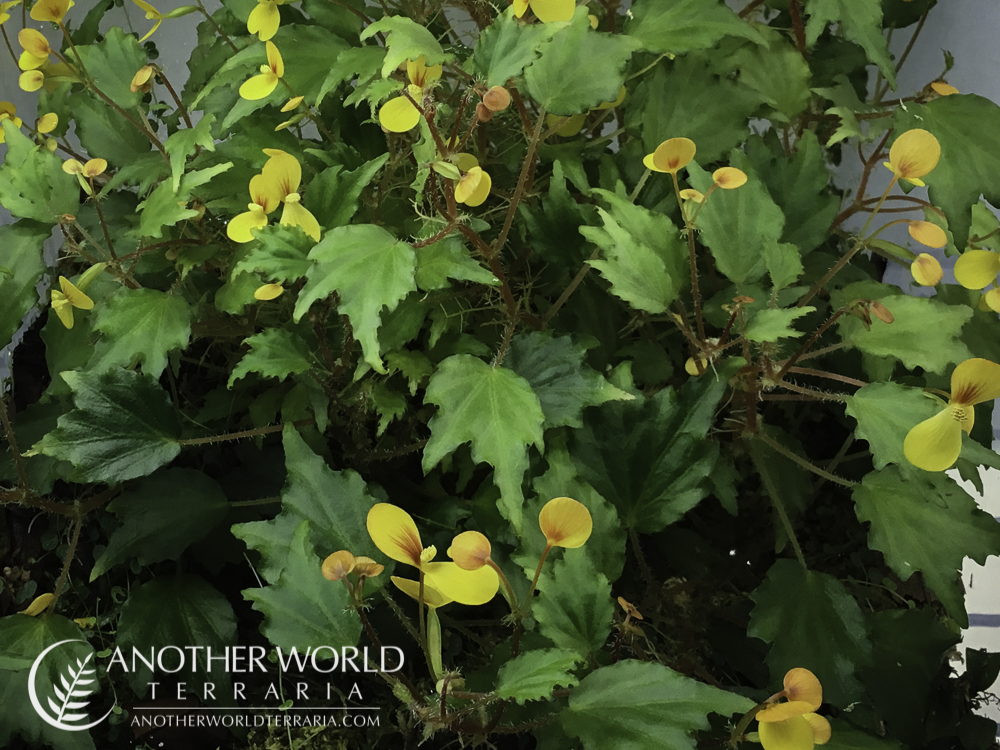
#1. Begonia prismatocarpa
Humidity: High to Very High
Moisture: Moist to Wet
Substrates: Sphagnum
Drainage: Little to Average
Planting: Terrestrial
Light: Low to Medium
Growth: Medium
Aside from the small size and interesting shaped leaves, one of the best things about this species is that it blooms almost constantly with pretty yellow flowers that have reddish orange streaks .
This Begonia is endemic to Cameroon, Africa, where it grows in a very warm and wet habitat.
This plant is one of the easiest to grow, but there are a couple of important care points:
- First, give it very high humidity
- Second, don’t ever let it dry out. Keep it constantly very moist or even wet.
It looks best in low to medium light, which will ensure the leaves stay a healthy dark green color, as opposed to becoming yellow and pale in brighter light.
It does very well with Sphagnum moss for the substrate
Since B. prismatocarpa grows quite fast, it’s best to avoid using it in very small terrariums.

#2. Trailing Peperomia spp.
Humidity: Medium to High
Moisture: Moist
Substrates: Sphagnum, Moist Wood
Drainage: Good
Planting: Terrestrial, Epiphytic, Backgrounds
Light: Low to Medium
Growth: Fast
Relatively few people are aware of the wide variety of amazing and beautiful trailing plants in this genus beyond the most common species.
Some Peperomia, occasionally abbreviated by hobbyists as “Peps”, are tolerant of being on the drier side, but most of the scrambling species do better when kept moist.
They should have good drainage and not be kept too wet.
Give them medium to high humidity, and low to medium light.
I use Sphagnum for substrate, but trailing Peps will grow on almost any moist substrate or surface.
The trailing species of Peperomia are usually fast growing and somewhat invasive, so it’s best to avoid using them in small terrariums. You should also be prepared to trim them back and weed them out on a regular basis.
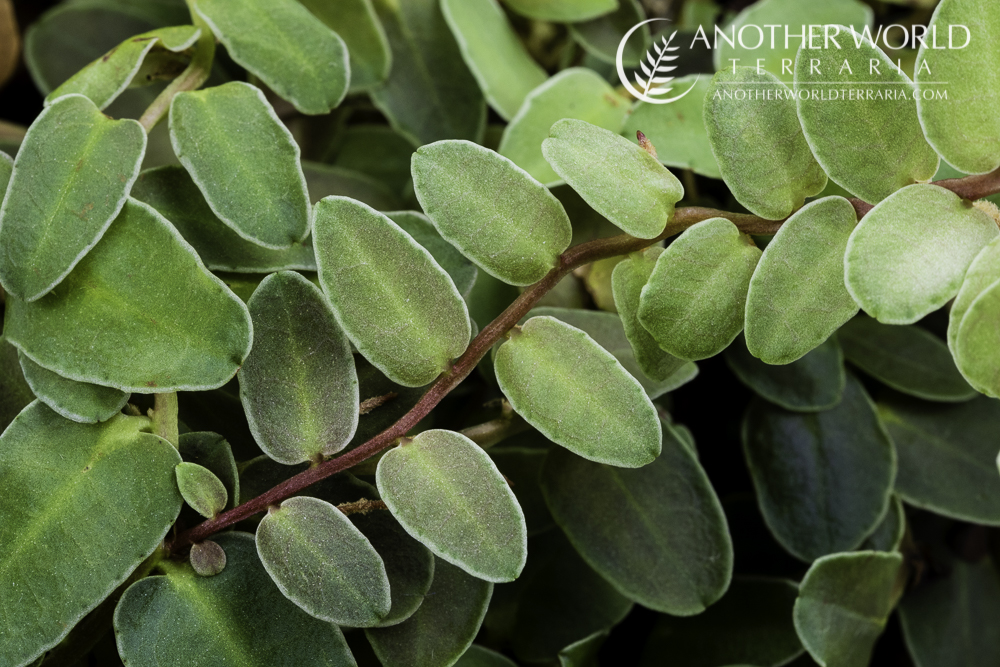
#3. Marcgravia spp.
Humidity: High
Moisture: Moist
Substrates: Sphagnum, Moist Wood
Drainage: Moderate
Planting: Epiphytic, Backgrounds
Light: Low to Medium
Growth: Slow to Medium
A type of tropical vine, most Marcgravia you’ll encounter are juvenile forms of what can later become a much larger and different looking plant if given enough space and not trimmed back.
Give Marcgravia high humidity and always keep them moist without drying out.
Although you can grow and propagate them terrestrially on a bed of Sphagnum, they will look most attractive when climbing vertical surfaces such as moist backgrounds and wood.
If attempting to grow them on a vertical surface, especially if it’s not very moist, be sure the plants are well rooted in Sphagnum at the base so they can hydrate themselves properly.
Some can be grown in relatively bright light and will develop red and pink colors, but in my opinion they look best in low to medium light, which tends to promote metallic and iridescent blue, purple, and other hues.
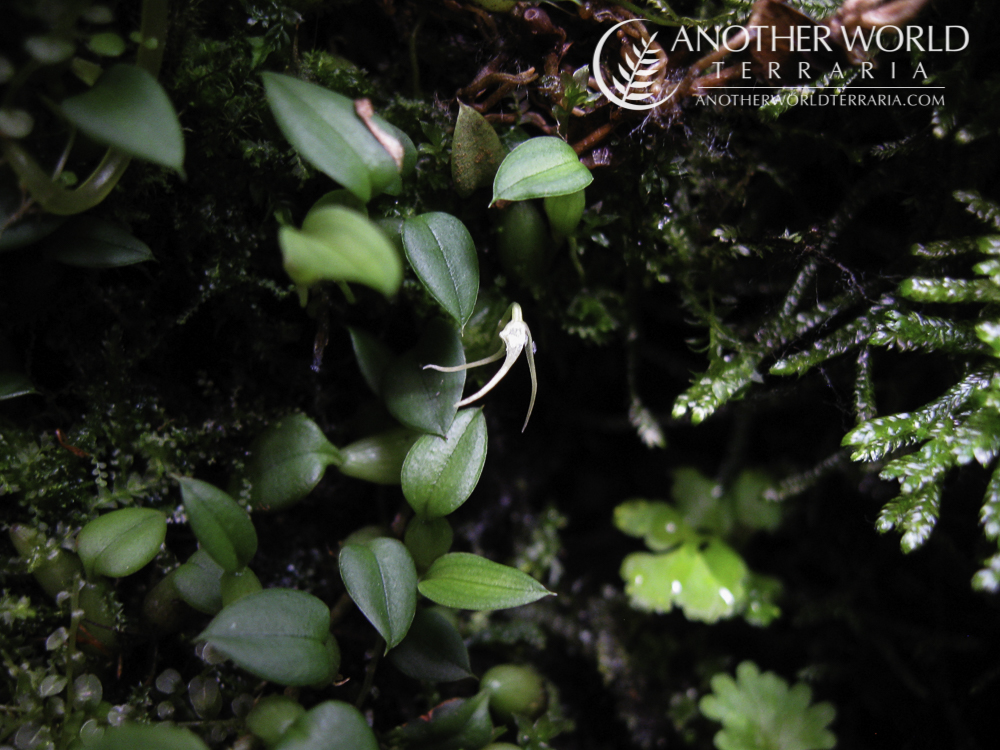
#4. Bulbophyllum mucronatum
Humidity: High
Moisture: Moist
Substrates: Sphagnum, Moist Wood
Drainage: Good
Planting: Epiphytic, Backgrounds
Light: Low to Medium
Growth: Slow to Medium
This micro orchid is one of the easiest orchids to grow in a terrarium and is great for beginners who may not fare as well with more challenging species.
This plant is occasionally mislabeled as Bulbophyllum alagense. There are a couple of subspecies, and the plant varies in appearance depending on conditions and locale. My plant seems to be one of the smaller forms.
It’s best grown as an epiphyte on wood, backgrounds, or other raised areas with good drainage.
Give it high humidity, and keep it moist, but not wet. If mounted epiphytically, it will do better with a layer of sphagnum to hold moisture at the roots, otherwise it should be misted often enough that it isn’t dry for too long.
Although B. mucronatum prefers to be moist, it is tolerant of occasionally being slightly on the drier side for short periods.
The foliage will be more attractive when grown in low to medium light levels.
This orchid may occasionally bloom, but the flowers are extremely small and pale in color, so if you want to see them, keep a very close eye on the plant year round.
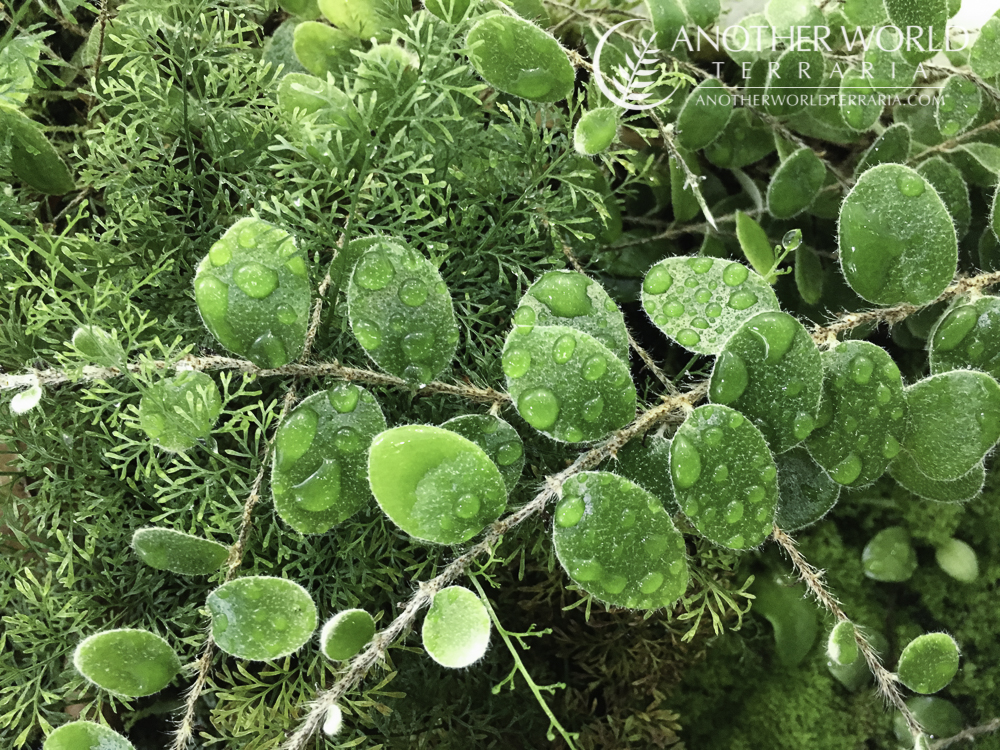
#5. Pyrrosia nummulariifolia
Humidity: High
Moisture: Moist
Substrates: Sphagnum, Moist Wood
Drainage: Good
Planting: Epiphytic, Backgrounds
Light: Low to Medium
Growth: Medium to Fast
This mini fern species is most commonly referenced as B. nummularifolia, but I’ve found some evidence that the accepted spelling may be B. nummulariifolia, with two i’s next to each other (see references below).
It does best epiphytically on Sphagnum and moist wood, but with good drainage so it doesn’t stay too wet. Give it high humidity.
Try to avoid letting water stand on the fronds and rhizomes for long periods of time. I think this species grows slightly better with a small bit of air movement, but it’s not a requirement.
It will grow well in low to medium light.
If grown from cuttings without a lot of roots, this plant takes quite a while to establish, but after that point it grows reasonably fast.
As of 2021-02, the following references list the accepted name as P. nummulariifolia (with two i’s next to each other)
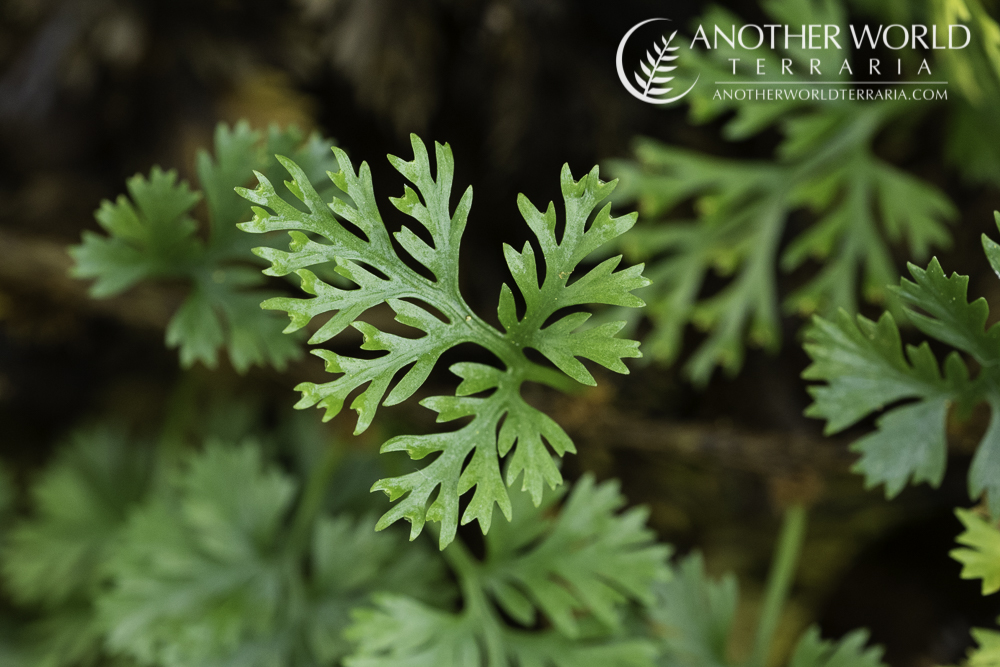
#6. Davallia parvula
Humidity: High
Moisture: Moist
Substrates: Sphagnum, Moist Wood
Drainage: Good
Planting: Epiphytic, Backgrounds
Light: Low to Medium
Growth: Medium
This miniature, epiphytic, creeping fern may look delicate, but it’s quite sturdy and resilient. The feathery and intricate fronds have a somewhat plasticky feel to them.
The fronds with slightly more broad pinna are sterile, and the ones with very thin and feathery pinna are the spore bearing fertile ones.
Keep this fern in high humidity, and make sure the substrate is moist but not wet. It’s somewhat tolerant of occasionally being on the drier side for very short periods, but try to avoid that anyway.
This plant should be grown as an epiphyte, or otherwise grown in an area that has good drainage and won’t get soggy.
The foliage looks best in low to medium light levels.
Sphagnum, moist wood, and moist terrarium backgrounds are all good substrates.
If grown from cuttings without a lot of roots, or going through a transplant shock, sometimes Davallia will drop fronds. It usually takes quite some time for the cuttings to establish, but then the plant will pick up speed.
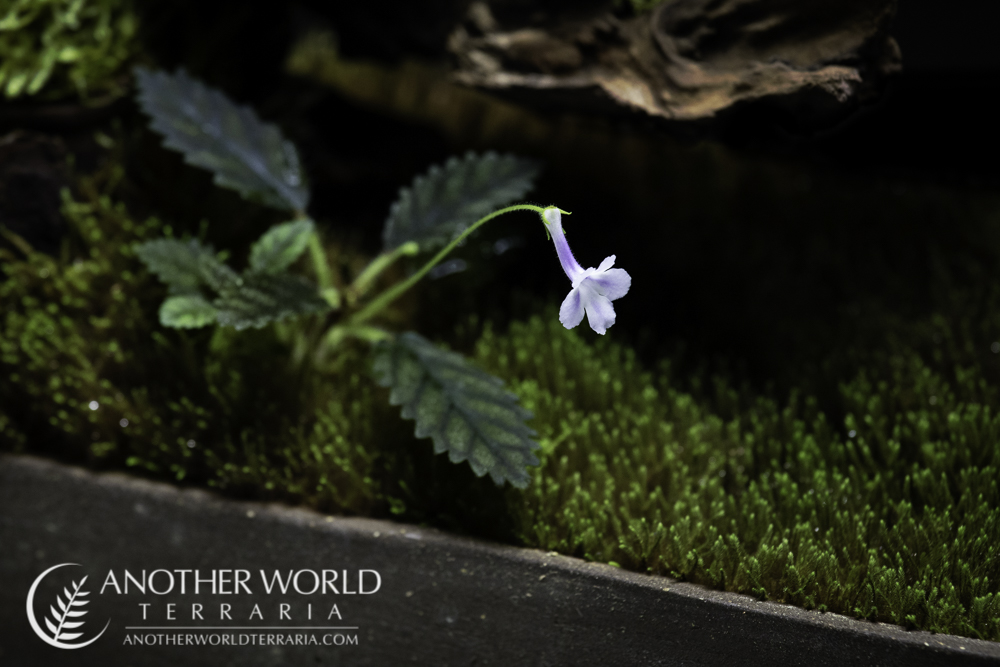
#7. Sinningia muscicola
Humidity: High
Moisture: Moist
Substrates: Sphagnum
Drainage: Good
Planting: Terrestrial, Epiphytic
Light: Low to Medium
Growth: Medium
Sometimes this species is called Sinningia “Rio das Pedras” after the location it was found in Brazil.
This plant is in the family Gesneriaceae, commonly referred to as Gesneriads.
S. muscicola is a tuberous species which may occasionally die back, either fully or partially, for a rest period. If this happens, you can slightly reduce watering until you notice new growth, but in my experience a reduction in water isn’t absolutely necessary.
When happy, this plant blooms quite often and profusely with dainty pink flowers, and it will self seed like crazy. The ease of propagation is convenient because this mini plant looks best in colonies.
Give this species high humidity, and
Keep it moist, but with decent drainage so the substrate won’t get soggy.
I think this one grows and looks best in medium light levels.
Sphagnum works very well for S. muscicola as long as you don’t overwater it.
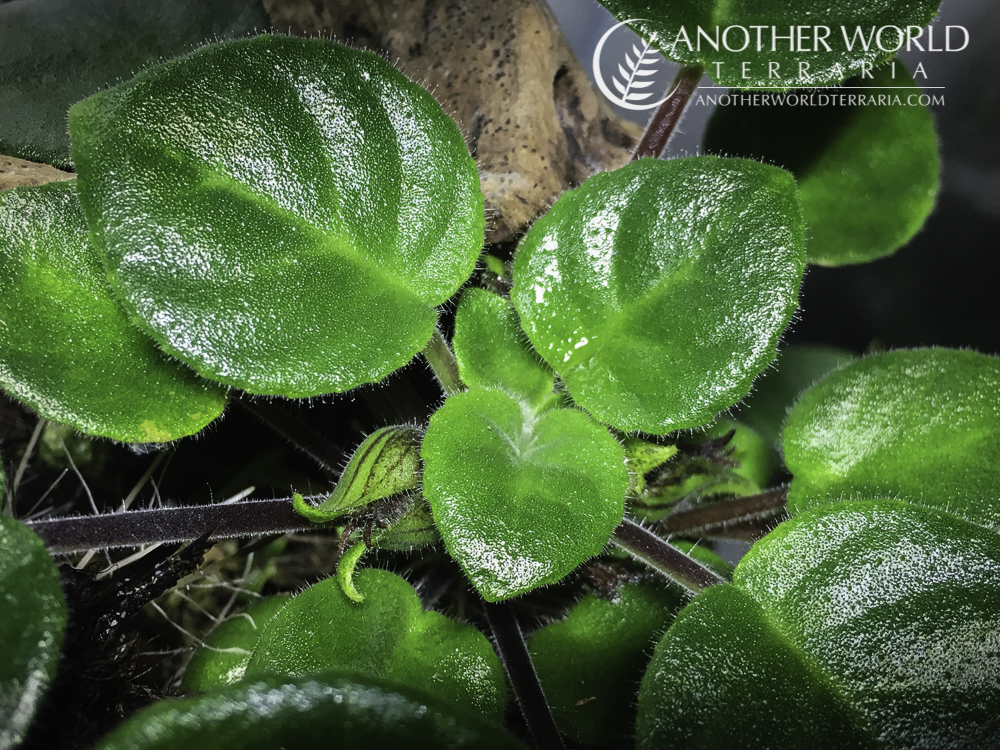
#8. Deinostigma tamianum
Humidity: Medium to High
Moisture: Moist
Substrates: African Violet Mix or Similar, Sphagnum with Perlite
Drainage: Good
Planting: Terrestrial
Light: Low to Medium
Growth: Medium to Fast
The correct species name is tamianum, not tamiana (see references below).
Most of what you’ll see online will say tamiana, but that name is an incorrectly used remnant from when the plant was previously classified as Chirita or Primulina tamiana.
This small Gesneriad likes high humidity, but can adapt well to medium humidity levels.
Give it a well drained substrate such as an African Violet Mix, or use Sphagnum with perlite added.
Keep the substrate moist, but not wet.
This one looks best in medium lighting.
When happy, it will bloom profusely with clusters of white flowers that have two purple stripes.
As of 2021-02, the following references list the accepted name as D. tamianum
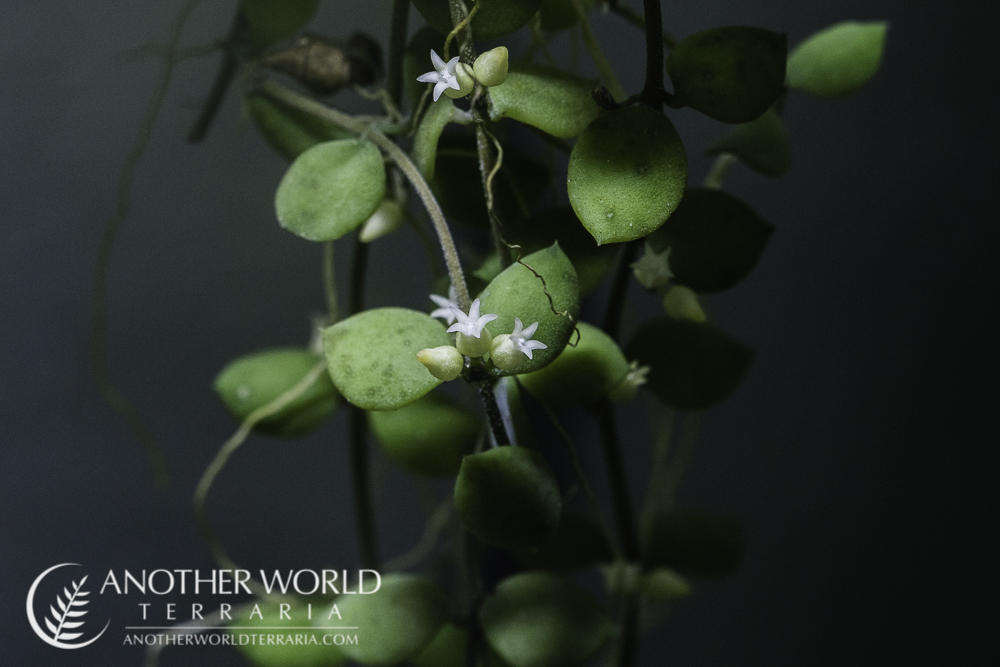
#9. Dischidia nummularia
Humidity: Medium to High
Moisture: Slightly Moist to Moist
Substrates: Sphagnum, Cork bark
Drainage: Very good
Planting: Epiphytic, Backgrounds
Light: Low to High
Growth: Medium to Fast
Dischidia are epiphytic vines that are categorized as ant plants, or myrmecophytes, which in the wild have a mutually beneficial relationship with ants that live in the trees they grow on.
They look especially nice when grown on branches or terrarium backgrounds.
Dischidia nummularia is quite drought tolerant. I’ve found it’s best to keep it slightly moist most of the time, with occasional periods of a bit more moisture, and occasional periods of letting it dry out between waterings.
The most important key is to give it good drainage and never keep it soggy.
Air movement is beneficial to this species, which will help the roots and foliage dry out slightly between waterings and prevent rot and fungal issues.
Dischidia is best grown as an epiphyte, but can grow as a ground cover as long as the substrate isn’t too wet.
This species can grow in just about any light level, from low light up to bright light.
It can be grown with a small amount of Sphagnum, on Cork Bark, EpiWeb panel, terrarium backgrounds, and so on.
This one gets adorable tiny white flowers in clusters along the stem. I’ve found that sometimes you can trigger a bloom by reducing water and fertilizer for a few months and then increasing them again.
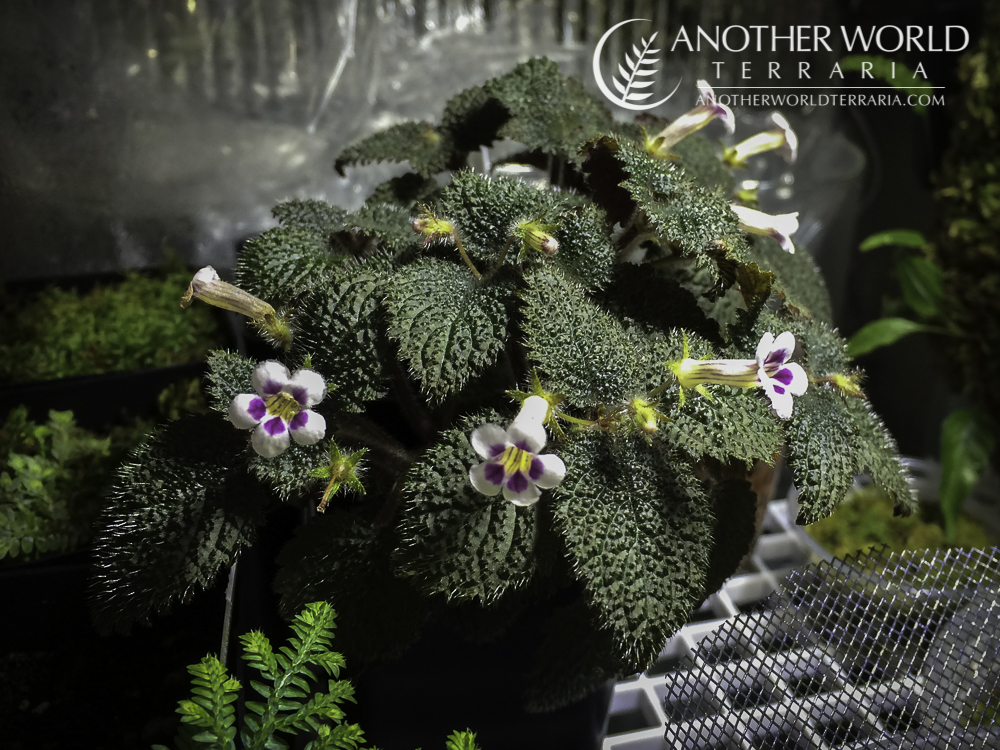
#10. Diastema affine
Humidity: High to Very High
Moisture: Moist
Substrates: Sphagnum
Drainage: Good
Planting: Terrestrial
Light: Low to Medium
Growth: Medium to Fast
This plant is going around the hobby most commonly labeled as Diastema hispidum, but after extensive research I’m 99% sure it’s Diastema affine.
The biggest challenges to confirming ID on this plant were a lack of accessible scientific reference materials, and a profusion of conflicting and mislabeled photos online.
That said, in my research, I came across a Botanical Publication containing side and front views of the flowers of Diastema hispidum and D. affine, and the affine bloom is an exact match to those of the plant that I and most people in the hobby have.
In any case, this is one of my favorite miniature plants.
It has lovely serrated foliage with fantastic texture and color.
It also gets very cute, pretty little white flowers, with purple splotches on each petal.
The only downside to this species is that it can sometimes become a bit straggly and floppy, so it’s not always a tidy clump.
However, it can be trimmed back or easily restarted from tip cuttings.
In my opinion the plant looks best in very low light, where the foliage becomes dark green and can have a slightly iridescent metallic sheen with blue and purple hues.
This species needs high to very high humidity to protect the thin and delicate foliage from desiccating.
It does very well when grown terrestrially in Sphagnum.
Diastema is a bit of a fast grower, and as mentioned isn’t always the tidiest plant, so I’d save it for medium to large terrariums.
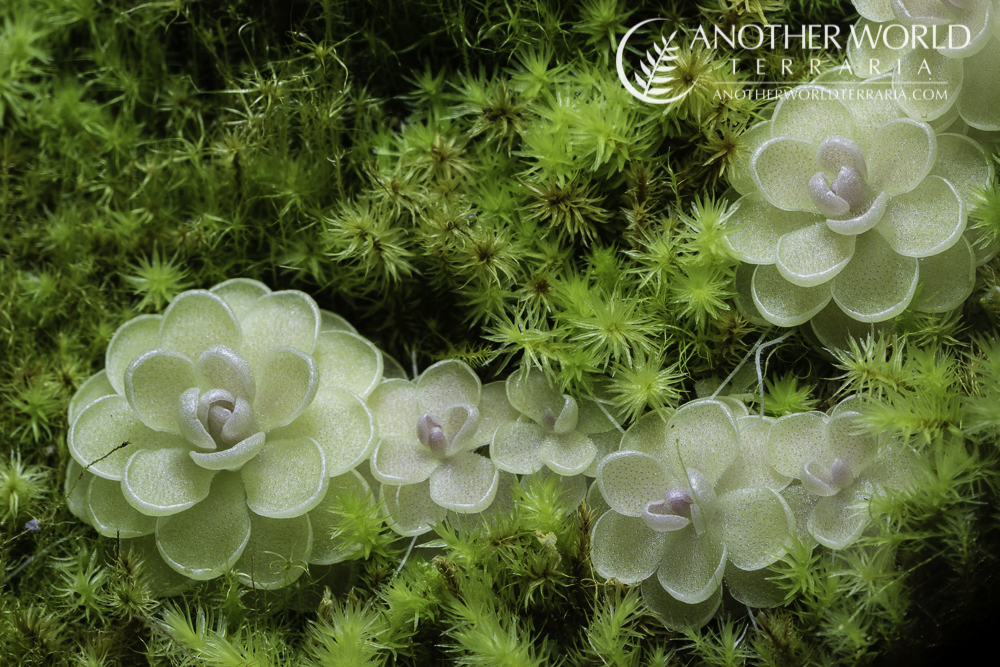
#11. Tropical / Mexican Pinguicula spp.
Humidity: Medium to High
Moisture: Moist
Substrates: (1:1:1) Lava + Pumice + Limestone Grit
Drainage: Good
Planting: Terrestrial, Lithophytic (on rocks)
Light: Medium to Very High
Growth: Medium
Many of the tropical Pinguicula originate from Mexico.
There’s a lot to love about this group of plants:
- They have beautiful and interesting foliage shapes, growth patterns, and colors
- They produce gorgeous flowers in a variety of stunning colors
- They are carnivorous
The exact care and requirements for Mexican tropical Pings vary depending on the species and their habitat, but in general they are quite adaptable.
Depending on the species, the ideal light levels may vary from medium up to extremely high. Most are adaptable though. In high light, the plants will be compact and more colorful.
Mexican Pings do best in medium to high humidity.
I prefer to keep the substrate moist most of the time, and occasionally wet for a short period, but I don’t ever keep the plants in swampy conditions. In my experience these Mexican Pings do much better when kept slightly moist and well drained.
For substrate, some people use peat moss and sand, or other similar carnivorous plant mixes. I prefer, and have had much better success, with mineral-based substrate mixes, because they drain better, last forever, and are more alkaline in pH which is a better match to where most of these plants grow in the wild.
My current mix for Mexican Pinguicula is:
- 1 part small lava
- 1 part pumice
- 1 part limestone grit
The limestone grit is optional. If you decide to add it, be sure to get coarse limestone grit, which is crushed limestone. Do not use agricultural or pelletized lime, which are completely different things.
I fertilize my Pinguicula by occasionally spraying them with Grow More Urea Free Orchid Fertilizer mixed to ¼ the strength noted on the label.
Some species have a semi-dormant period when the foliage changes form. I tend to reduce water and fertilizer slightly during that time.

